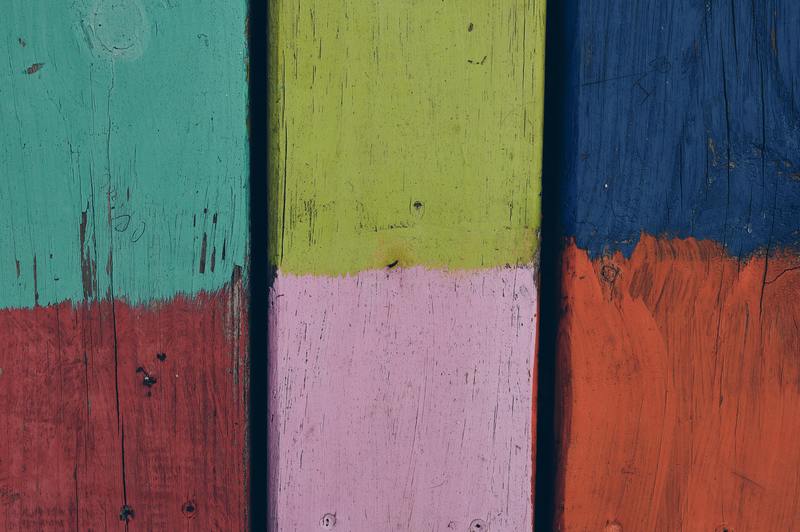It isn’t challenging to learn how to remove mildew from painted wood. At most, the hardest part is deciding which solution you should use, which we’ll help you with below.

What Is Mildew?
Mildew and mold are often used interchangeably, but they are different types of fungi. Another misconception about the two is that mildew is the early form of mold, which it isn’t.
The misconception that they are the same is due to the fact that mildew is often light and the early forms of mold are white. However, the texture of these two fungi is different.
Mold is either fuzzy or slimy, while mildew is either powdery or downy. Moreover, mold is typically darker and ranges from dark green to black, while mildew is often white or faded yellow.
Another difference is that mildew frequents organic materials and does not penetrate the surface it rests on. On the other hand, mold seeps through the object it contaminates and damages it from there.
The above statement is why mold is a more serious concern than mildew. Despite this, you cannot take the mildew fungi for granted because they can invite mold and still have adverse health effects on vulnerable people (e.g., pregnant women, people with asthma).
How Does Mildew Affect Wood And People?
Mildew is not as damaging as mold, whether regarding health effects or the area it contaminates. It cannot break down wood or plastic, but it is particularly harmful to plants.
Experts even came up with powdery mildew preventative measures to combat its growth on plants. Despite being mildly damaging to wooden surfaces, you should not let mildew grow freely.
This is because when mildew spreads, it can make the environment amenable for mold to grow in. This would then naturally lead to mold growth.
As you know from above, mold growth on surfaces is a serious issue as it breaks down objects. When you incur mold growth in your home, you should be prepared for the repair costs that come along with it.
Here is an article detailing how much does mold inspection cost to help you estimate the final amount of repairs you will need if your home gets contaminated with mold.
How To Detect Mildew On Painted Wood
Mildew and mold both exude a particularly unpleasant smell when they invade your home. However, this just makes it difficult for you to differentiate between the two fungi.
Moreover, this unpleasant smell is not a cause of alarm for some people because it may just be due to a lack of airflow. Therefore, some homeowners would just open their windows to ventilate the room.
That move in a fungi contamination is a temporary solution to a persistent problem. Hence, people should be warrier upon noticing a musty smell on their painted wood.
Another way to detect mildew on painted wood is the growth itself. If you notice a white or light yellow powdery or downy texture on its surface, then it is likely mildew.
However, please do not touch the mildew growth as it may trigger skin allergies. Do not inhale or try to smell the mildew because it may lead to respiratory complications.
If you are unsure about the existence of mildew on your painted wood, we recommend the use of a moisture meter to measure the moisture level of the surface. A high moisture level would indicate that you have mildew or mold growth in your home.
Steps In Removing Mildew From Painted Wood
Step #1. Choose a solution
There are a myriad of solutions in killing mildew and mold. One of the most well-known or go-to solutions is bleach.
However, it is often seen as too potent and may lead to discoloration.
You can use a CLR Mold and Mildew Remover to use a commercial product to remove fungi. Here’s an article about where to buy CLR Mold and Mildew Remover, so you won’t have to exert effort in searching for it on the internet.
Although, you can use vinegar or baking soda as alternatives to bleach. These alternatives are prepared almost the same way as well.
Step #2. Prepare the solution
Commercial products are used differently than household products. For easily accessible mold-killing solutions like vinegar, bleach, and baking soda, you just need to add water and place them in a container.
Here’s a link to a guide to using CLR Mold and Mildew Remover. As for vinegar, bleach, and baking soda, you need to prepare them alongside water and a clean container.
After diluting bleach and vinegar and dissolving baking soda, you can apply it to the mildew-contaminated surface. Brush the area as needed or if there are persistent mildew stains.
Repeat the steps on applying and brushing until the stains on the painted wood are removed.
Step #3. Fix the painted wood
After removing the mildew, fix the paint on the wood by removing the old paint and repainting over the surface. For paint problems, here is a guide on common paint problems and ways to fix them.
Conclusion
After learning how to remove mildew from painted wood, you should also pay attention to fixing the damaged paint. Besides that, we hope this article was helpful for your mildew removal process.
